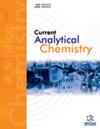中国西南部成都市双源墓地出土青铜刀的类型、铅同位素及文化交流研究
IF 1.7
4区 化学
Q3 CHEMISTRY, ANALYTICAL
引用次数: 0
摘要
背景:青铜刀是中国西南地区蜀国的重要器物,出土量大,具有等级意义。根据以往对青铜刀的类型学分析,推测蜀文化可能曾传入过外来风格的青铜刀。然而,要进一步证明金属材料的来源、刀的类型和文化交流,就必须通过科学分析的视角进行全面考察。本研究的目的是探讨不同文化风格的蜀国青铜刀在制造工艺和金属资源方面的差异,以及外来风格的青铜刀是舶来品还是本地仿制品。研究方法:本研究采用类型学、便携式 X 射线荧光光谱仪和多收集器电感耦合等离子体质谱仪对四川省成都市双元东周墓地出土的 24 件青铜刀进行了分析。研究结果研究结果表明,双源墓地出土的青铜刀从类型上可分为五种,既有本地风格,也有外来风格。这些刀具的主要合金成分是铅锡青铜,其特点是锡含量明显偏高。铅同位素比值表明,蜀国墓地出土的青铜刀主要使用了华南地球化学省和长江地球化学省的金属材料:大部分外来的环首刀可能是从楚国等周边地区传入的,而风格独特的D型和E型青铜刀似乎是蜀人在当地仿制的,体现了外来影响与本土创新的融合。将青铜刀的类型学与科学分析相结合,可为东周时期的蜀文化研究提供新的启示。本文章由计算机程序翻译,如有差异,请以英文原文为准。
A Typology and Lead Isotope and Cultural Exchange Study on Bronze Knives from Shuangyuan Cemetery, Chengdu City, Southwest China
Background: Bronze knives, which have been excavated in large quantities and acquired hierarchical significance, are essential artifacts in Shu State in Southwest China. Building upon previous typological analyses of bronze knives, it is hypothesized that Shu culture may have imported foreign-style bronze knives. However, further demonstration of the provenance of metal materials, the typology of knives, and the cultural exchange necessitates a comprehensive examination through the lens of scientific analysis. The purpose of this study is to investigate the differences in the manufacturing processes and metal resources of Shu bronze knives with various cultural styles and whether bronze knives in the foreign styles were imported or locally imitated. Methods: In this study, the typology, portable X-ray fluorescence spectrometry and multi-collector inductively coupled plasma mass spectrometry were used to analyze twenty-four bronze knives unearthed from Shuangyuan cemetery, a cemetery of the Eastern Zhou Dynasty in Chengdu City, Sichuan Province, Southwest China. Results: The results of the study show that the knives of Shuangyuan Cemetery can be classified typologically into five types, encompassing both local and foreign styles. The predominant alloy composition of these knives is lead-tin bronze, characterized by a notably high tin content. Lead isotope ratios indicate that metal materials from the South China geochemical province and Yangtze geochemical province were mainly used to manufacture the bronze knives unearthed from the Shu state Conclusion: While the majority of foreign-style knives with ring-shaped heads were likely imported from neighboring regions like Chu state, distinctively styled type D and type E bronze knives appear to have been locally imitated by the Shu, showcasing a blend of external influences and indigenous innovation. The combination of typology and scientific analysis of the bronze knife may shed new light on the study of the Shu culture of the Eastern Zhou period.
求助全文
通过发布文献求助,成功后即可免费获取论文全文。
去求助
来源期刊

Current Analytical Chemistry
化学-分析化学
CiteScore
4.10
自引率
0.00%
发文量
90
审稿时长
9 months
期刊介绍:
Current Analytical Chemistry publishes full-length/mini reviews and original research articles on the most recent advances in analytical chemistry. All aspects of the field are represented, including analytical methodology, techniques, and instrumentation in both fundamental and applied research topics of interest to the broad readership of the journal. Current Analytical Chemistry strives to serve as an authoritative source of information in analytical chemistry and in related applications such as biochemical analysis, pharmaceutical research, quantitative biological imaging, novel sensors, and nanotechnology.
 求助内容:
求助内容: 应助结果提醒方式:
应助结果提醒方式:


